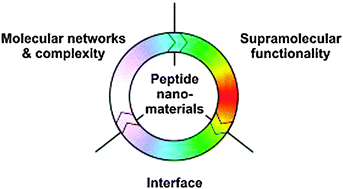Next-generation peptide nanomaterials: molecular networks, interfaces and supramolecular functionality†
Abstract
With improved understanding of the design rules for self-assembling

- This article is part of the themed collection: Peptide- and protein-based materials

 Please wait while we load your content...
Please wait while we load your content...